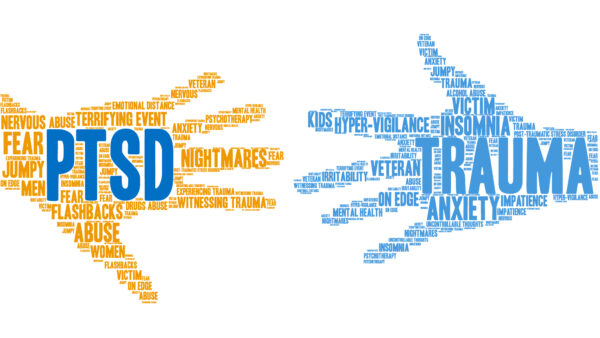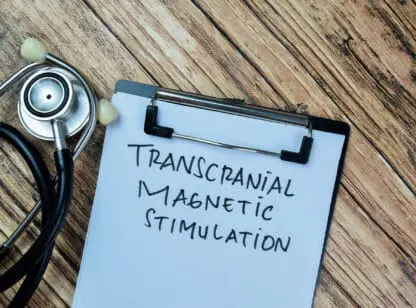What led me to write this article is the noticeable increase in clients seeking help for their mental and emotional distress, particularly as the pandemic has drawn on. Is the rise in people seeking psychological help coming from the stress of the current pandemic’s circumstances? For many, it is. However, I’ve also seen a surge in clients coming for help because the pandemic has intensified unresolved trauma they experienced previously in life. When individuals do not work to process earlier traumas, it is much more likely their reactions to and symptoms from the current trauma will be more intense.
The pandemic is boosting the experience of trauma worldwide.1 Some wonder about the use of the word “trauma.” Doesn’t trauma refer to violence and aggression? People typically think trauma involves life-threatening events like battle, child abuse or domestic violence. These can be called “Big T” traumas. Equally important, are the “little t” traumas such as bullying, financial or legal worries, separation/divorce, family conflict and the like. Because these experiences are not as extreme, people experiencing them often minimize them and see their reactions as overreactions. Trying to resist or deny symptoms of trauma can be very harmful. A single “little t” trauma is not likely to lead to major trauma symptoms, but as more occur over time, their destructive impact intensifies.
As psychiatrist Julian Lagoy, MD told Healthline, “…the current COVID-19 pandemic has qualities that qualify as a traumatic experience as it takes a physical and emotional toll on many people.” He states that some of the key indicators of PTSD trauma, feeling threatened and guarded, and seeing the world as a fearful place, are being experienced by many.

According to the Centers for Disease Control and Prevention, trauma can manifest in a long list of physical, cognitive and emotional symptoms, including difficulties with memory and concentration, anxiety, irritability, fear, confusion, nausea, headaches and jaw clenching.2 Other common consequences include depression, anger, loss of motivation, reduced energy, hyperarousal, sleeping problems, appetite changes, decreased physical health, increased substance use and a greater risk of suicide or self-harm. Trauma can also lead to withdrawal from social connections, numbness and the inability to find pleasure in activities formerly enjoyed.
Trauma can have lasting effects on your mental, emotional and physical health and wellbeing. A large study in the 1990s found that the number of traumas or adverse childhood experiences (ACEs) was significantly related to various negative adult outcomes, including impaired mental and physical health, risky behaviors and substance abuse. The more traumas experienced, the higher the risk of developing these conditions.3
The need to heal
There is an increasing understanding that a significant proportion of trauma victims do not experience their highest stress immediately following the event. Instead, the intensity increases over time. According to Lagoy, “If a person doesn’t work through their trauma experience, these symptoms can become debilitating.”
Part of the difficulty in moving on healthfully from trauma is that traumatic information is not stored as usual in memory as it doesn’t make it to the hippocampus, the main memory center of the brain. Instead, this information is stored in the amygdalae in the deeper brain, which many know as the driver of the “fight-and-flight” response and negative emotions. What does this mean? The memories of traumatic events remain in the primitive, sub-cortical brain, which does not have easy access to language and complex cognitive processes. As a result, there are drawbacks to therapies which rely on just talk or verbal exchanges because many of the traumatic memories cannot be accessed verbally. Three of the effective, evidence-based treatments for trauma are as follows:
Prolonged exposure involves revisiting the traumatic experience in a safe and supportive environment so that you can finally emotionally process the trauma. This revisiting happens in a manner designed to help you heal.
Cognitive processing therapy (CPT) focuses much more on your thinking about the trauma. Through CPT, you will explore the meanings of the traumatic experience from your perspective and patterns of thought, as well as learn skills to help you move beyond the trauma.
Eye movement desensitization and reprocessing (EMDR) is a technique with which I have had wonderful success in helping clients. The process involves thinking about the traumatic memory while receiving forms of bilateral stimulation (eyes, hands, ears), among other treatment components. Many clients like this method as less discussion about the details of the traumatic or disturbing event is required.
While not an evidence-based trauma treatment, Brainspotting is a newer approach developed from EMDR. It can be highly effective with trauma-based situations to identify and heal underlying trauma contributing to anxiety, depression and other behavioral conditions. Brainspotting is a tool that lets a therapist access both brain and body processes by noting a patient’s strongest emotional responses to points along their visual field. Its goal is to bypass the conscious, neocortical thinking to access the deeper, subcortical emotional and body-based parts of the brain to process the trauma and be released from its harmful consequences.
The first step to addressing trauma and getting help for those who need it is acknowledging the existence of that trauma. The ongoing nature of the pandemic threat makes recovery more challenging. If you’re experiencing trauma-related symptoms from the pandemic or previous unresolved trauma and they are disturbing to you or interfering with your functioning, it’s important to seek professional assistance. If untreated, trauma can have long-term effects. Look for a therapist who specializes in trauma and is familiar with evidence-based forms of therapy that have proven effective for trauma treatment. You can also help yourself by being self-compassionate, patient and self-aware. Address your trauma now so you can start feeling better and be ready to move on peacefully and with joy when the pandemic is over.
Dr. Ravicz is a licensed clinical psychologist in Palm Springs and can be reached at (760) 904.7957. For more information, visit www.drsimonepsycologist.com.
References:
1) https://www.healthline.com/health-news/the-world-is-experiencing-mass-trauma-from-covid-19-what-you-can-do;
2) https://www.cdc.gov/niosh/topics/traumaticincident/default.html;
3) https://www.cdc.gov/violenceprevention/acestudy/about.html.
















































Comments (0)